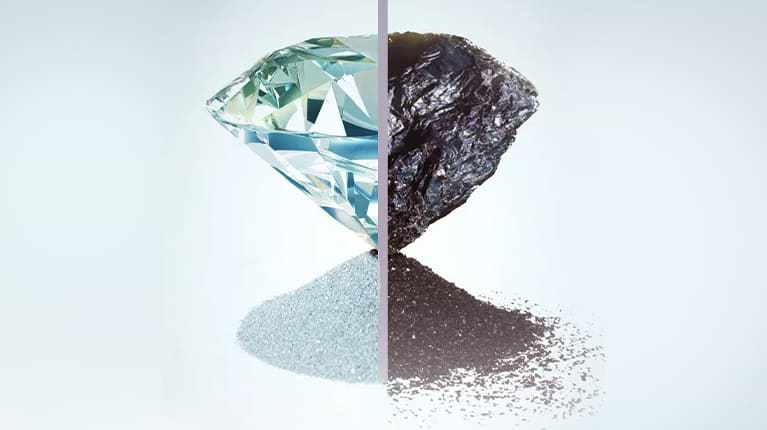Diamonds have long symbolized love, luxury, and eternal beauty. However, with the advancement of technology, there’s now a choice between diamonds mined from the earth’s depths and those cultivated in labs. Let’s delve into the intricate details of mined and lab diamonds to uncover which shines brighter in the realms of sustainability, ethics, and value.
Introduction
Diamonds, coveted for their rarity and brilliance, come in two distinct forms: mined and lab-created. While mined diamonds are extracted from the earth through extensive mining processes, lab diamonds are synthesized in controlled environments using cutting-edge technology. This article aims to dissect the nuances between these two types of diamonds, shedding light on their formation, quality, environmental impact, ethical considerations, and market trends.
History and Origin
The allure of diamonds dates back centuries, with mined diamonds being historically revered for their scarcity and natural beauty. However, the 20th century witnessed a revolutionary breakthrough with the advent of lab-created diamonds, marking a paradigm shift in the diamond industry. Where mined diamonds are a product of geological processes occurring over millions of years, lab diamonds are a product of human ingenuity, replicating the natural growth process in a fraction of the time.
Formation Process
Mined diamonds undergo a natural formation process deep within the earth’s mantle, where carbon atoms crystallize under immense pressure and heat over millions of years. In contrast, lab diamonds are cultivated through high-pressure, high-temperature (HPHT) or chemical vapor deposition (CVD) methods, mimicking the natural conditions under which diamonds are formed, albeit in a controlled laboratory setting.
Quality and Characteristics
When it comes to quality, both mined and lab diamonds possess similar physical and optical properties, including hardness, brilliance, and fire. However, subtle differences may exist due to variations in growth conditions. While mined diamonds may exhibit unique inclusions and imperfections, lab diamonds often boast superior clarity and consistency owing to the controlled synthesis process.
Environmental Impact
The environmental footprint of diamond mining is undeniable, mined or lab diamonds, with extensive land disruption, habitat destruction, and carbon emissions associated with the extraction process. Conversely, lab diamond production significantly reduces environmental strain by minimizing land use and energy consumption, offering a more sustainable alternative to mined diamonds.
Ethical Considerations
Diamond mining has been plagued by ethical controversies, including labor exploitation, human rights abuses, and environmental degradation in regions where diamonds are sourced. In contrast, lab diamonds are ethically sourced, free from the social and environmental injustices associated with traditional mining practices, making them a socially responsible choice for conscientious consumers.
Cost Comparison
While traditionally mined diamonds may command higher prices due to their perceived rarity and prestige, lab diamonds offer a more affordable and accessible alternative without compromising on quality or brilliance. Factors such as size, cut, color, and clarity influence the cost of both mined and lab diamonds, with lab diamonds often presenting a more cost-effective option for budget-conscious buyers.
Certification and Authentication
To ensure transparency and authenticity, both mined and lab diamonds undergo rigorous certification processes conducted by reputable gemological laboratories. Mined diamonds are graded based on the traditional 4Cs—cut, color, clarity, and carat weight—while lab diamonds are assessed using the same criteria to determine their quality and value in the market.
Market Trends
Consumer preferences are evolving, with a growing demand for sustainable and ethically sourced diamonds driving the market towards lab-grown alternatives. Millennials and Gen Z consumers, in particular, are embracing lab diamonds for their eco-friendly and socially conscious attributes, shaping the future of the diamond industry.
Durability and Longevity
In terms of durability and longevity, both mined and lab diamonds are equally resilient and capable of withstanding the test of time. Proper care and maintenance are essential for preserving the brilliance and luster of diamonds, regardless of their origin.
Cultural and Emotional Significance
While mined diamonds have long held cultural and emotional significance, the narrative is shifting as consumers become more informed about the ethical and environmental implications of diamond mining. Lab diamonds offer a modern interpretation of luxury, devoid of the ethical dilemmas associated with traditional diamond sourcing.
Fashion and Design Trends
The rise of lab diamonds has influenced jewelry design trends, with designers incorporating these sustainable gems into their collections to cater to eco-conscious consumers. Celebrity endorsements and influencers have further propelled the popularity of lab diamonds, cementing their position as a fashion-forward choice in the jewelry industry.
Consumer Awareness and Education
As awareness grows surrounding the environmental and ethical concerns associated with diamond mining, consumers are seeking transparent information to make informed purchasing decisions. Education initiatives aimed at dispelling myths and misconceptions about lab diamonds play a crucial role in empowering consumers to choose sustainable and ethical alternatives.
Future Prospects
The future of the diamond industry lies in innovation and sustainability, with advancements in lab diamond technology poised to reshape the market landscape. From eco-friendly production methods to blockchain traceability, the industry is undergoing a transformation towards greater transparency and accountability, ensuring a brighter and more ethical future for diamond enthusiasts worldwide.
Conclusion
In the timeless debate between mined and lab diamonds, the choice ultimately boils down to personal values, preferences, and priorities. While mined diamonds hold historical significance and natural allure, lab diamonds offer a sustainable and ethical alternative without compromising on quality or beauty. By making an informed choice, consumers can embrace the brilliance of diamonds while championing sustainability and ethics in the jewelry industry. Whether mined or lab-grown, diamonds continue to captivate hearts and minds, symbolizing everlasting love, beauty, and brilliance for generations to come.




